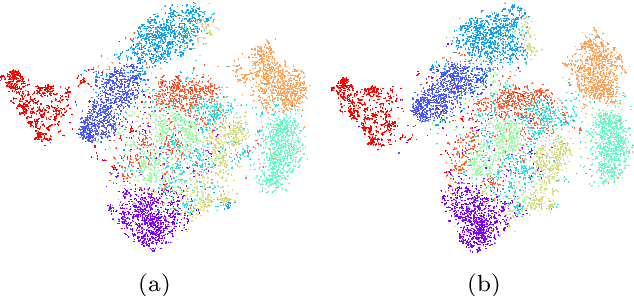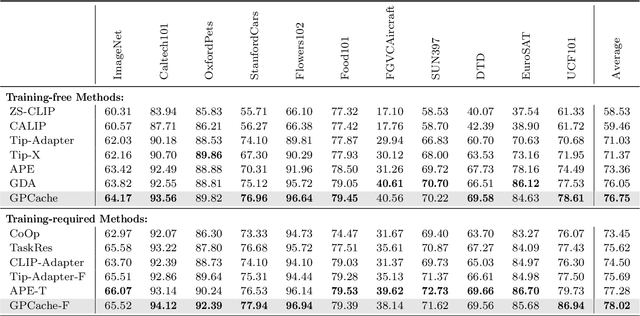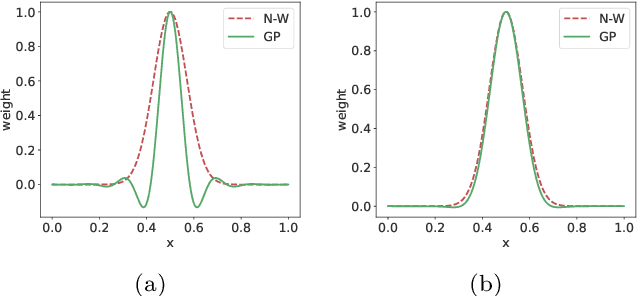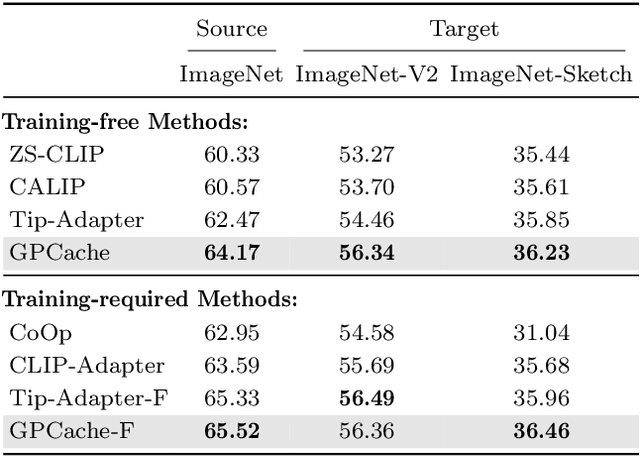Kun Ding
Re-ranking Reasoning Context with Tree Search Makes Large Vision-Language Models Stronger
Jun 09, 2025Abstract:Recent advancements in Large Vision Language Models (LVLMs) have significantly improved performance in Visual Question Answering (VQA) tasks through multimodal Retrieval-Augmented Generation (RAG). However, existing methods still face challenges, such as the scarcity of knowledge with reasoning examples and erratic responses from retrieved knowledge. To address these issues, in this study, we propose a multimodal RAG framework, termed RCTS, which enhances LVLMs by constructing a Reasoning Context-enriched knowledge base and a Tree Search re-ranking method. Specifically, we introduce a self-consistent evaluation mechanism to enrich the knowledge base with intrinsic reasoning patterns. We further propose a Monte Carlo Tree Search with Heuristic Rewards (MCTS-HR) to prioritize the most relevant examples. This ensures that LVLMs can leverage high-quality contextual reasoning for better and more consistent responses. Extensive experiments demonstrate that our framework achieves state-of-the-art performance on multiple VQA datasets, significantly outperforming In-Context Learning (ICL) and Vanilla-RAG methods. It highlights the effectiveness of our knowledge base and re-ranking method in improving LVLMs. Our code is available at https://github.com/yannqi/RCTS-RAG.
UNIP: Rethinking Pre-trained Attention Patterns for Infrared Semantic Segmentation
Feb 04, 2025Abstract:Pre-training techniques significantly enhance the performance of semantic segmentation tasks with limited training data. However, the efficacy under a large domain gap between pre-training (e.g. RGB) and fine-tuning (e.g. infrared) remains underexplored. In this study, we first benchmark the infrared semantic segmentation performance of various pre-training methods and reveal several phenomena distinct from the RGB domain. Next, our layerwise analysis of pre-trained attention maps uncovers that: (1) There are three typical attention patterns (local, hybrid, and global); (2) Pre-training tasks notably influence the pattern distribution across layers; (3) The hybrid pattern is crucial for semantic segmentation as it attends to both nearby and foreground elements; (4) The texture bias impedes model generalization in infrared tasks. Building on these insights, we propose UNIP, a UNified Infrared Pre-training framework, to enhance the pre-trained model performance. This framework uses the hybrid-attention distillation NMI-HAD as the pre-training target, a large-scale mixed dataset InfMix for pre-training, and a last-layer feature pyramid network LL-FPN for fine-tuning. Experimental results show that UNIP outperforms various pre-training methods by up to 13.5\% in average mIoU on three infrared segmentation tasks, evaluated using fine-tuning and linear probing metrics. UNIP-S achieves performance on par with MAE-L while requiring only 1/10 of the computational cost. Furthermore, UNIP significantly surpasses state-of-the-art (SOTA) infrared or RGB segmentation methods and demonstrates broad potential for application in other modalities, such as RGB and depth. Our code is available at https://github.com/casiatao/UNIP.
Diffusion Model as a Noise-Aware Latent Reward Model for Step-Level Preference Optimization
Feb 03, 2025



Abstract:Preference optimization for diffusion models aims to align them with human preferences for images. Previous methods typically leverage Vision-Language Models (VLMs) as pixel-level reward models to approximate human preferences. However, when used for step-level preference optimization, these models face challenges in handling noisy images of different timesteps and require complex transformations into pixel space. In this work, we demonstrate that diffusion models are inherently well-suited for step-level reward modeling in the latent space, as they can naturally extract features from noisy latent images. Accordingly, we propose the Latent Reward Model (LRM), which repurposes components of diffusion models to predict preferences of latent images at various timesteps. Building on LRM, we introduce Latent Preference Optimization (LPO), a method designed for step-level preference optimization directly in the latent space. Experimental results indicate that LPO not only significantly enhances performance in aligning diffusion models with general, aesthetic, and text-image alignment preferences, but also achieves 2.5-28$\times$ training speedup compared to existing preference optimization methods. Our code will be available at https://github.com/casiatao/LPO.
Efficient Redundancy Reduction for Open-Vocabulary Semantic Segmentation
Jan 29, 2025



Abstract:Open-vocabulary semantic segmentation (OVSS) is an open-world task that aims to assign each pixel within an image to a specific class defined by arbitrary text descriptions. Recent advancements in large-scale vision-language models have demonstrated their open-vocabulary understanding capabilities, significantly facilitating the development of OVSS. However, most existing methods suffer from either suboptimal performance or long latency. This study introduces ERR-Seg, a novel framework that effectively reduces redundancy to balance accuracy and efficiency. ERR-Seg incorporates a training-free Channel Reduction Module (CRM) that leverages prior knowledge from vision-language models like CLIP to identify the most relevant classes while discarding others. Moreover, it incorporates Efficient Semantic Context Fusion (ESCF) with spatial-level and class-level sequence reduction strategies. CRM and ESCF result in substantial memory and computational savings without compromising accuracy. Additionally, recognizing the significance of hierarchical semantics extracted from middle-layer features for closed-set semantic segmentation, ERR-Seg introduces the Hierarchical Semantic Module (HSM) to exploit hierarchical semantics in the context of OVSS. Compared to previous state-of-the-art methods under the ADE20K-847 setting, ERR-Seg achieves +$5.6\%$ mIoU improvement and reduces latency by $67.3\%$.
Rethinking Comprehensive Benchmark for Chart Understanding: A Perspective from Scientific Literature
Dec 11, 2024



Abstract:Scientific Literature charts often contain complex visual elements, including multi-plot figures, flowcharts, structural diagrams and etc. Evaluating multimodal models using these authentic and intricate charts provides a more accurate assessment of their understanding abilities. However, existing benchmarks face limitations: a narrow range of chart types, overly simplistic template-based questions and visual elements, and inadequate evaluation methods. These shortcomings lead to inflated performance scores that fail to hold up when models encounter real-world scientific charts. To address these challenges, we introduce a new benchmark, Scientific Chart QA (SCI-CQA), which emphasizes flowcharts as a critical yet often overlooked category. To overcome the limitations of chart variety and simplistic visual elements, we curated a dataset of 202,760 image-text pairs from 15 top-tier computer science conferences papers over the past decade. After rigorous filtering, we refined this to 37,607 high-quality charts with contextual information. SCI-CQA also introduces a novel evaluation framework inspired by human exams, encompassing 5,629 carefully curated questions, both objective and open-ended. Additionally, we propose an efficient annotation pipeline that significantly reduces data annotation costs. Finally, we explore context-based chart understanding, highlighting the crucial role of contextual information in solving previously unanswerable questions.
Continuous Speculative Decoding for Autoregressive Image Generation
Nov 18, 2024Abstract:Continuous-valued Autoregressive (AR) image generation models have demonstrated notable superiority over their discrete-token counterparts, showcasing considerable reconstruction quality and higher generation fidelity. However, the computational demands of the autoregressive framework result in significant inference overhead. While speculative decoding has proven effective in accelerating Large Language Models (LLMs), their adaptation to continuous-valued visual autoregressive models remains unexplored. This work generalizes the speculative decoding algorithm from discrete tokens to continuous space. By analyzing the intrinsic properties of output distribution, we establish a tailored acceptance criterion for the diffusion distributions prevalent in such models. To overcome the inconsistency that occurred in speculative decoding output distributions, we introduce denoising trajectory alignment and token pre-filling methods. Additionally, we identify the hard-to-sample distribution in the rejection phase. To mitigate this issue, we propose a meticulous acceptance-rejection sampling method with a proper upper bound, thereby circumventing complex integration. Experimental results show that our continuous speculative decoding achieves a remarkable $2.33\times$ speed-up on off-the-shelf models while maintaining the output distribution. Codes will be available at https://github.com/MarkXCloud/CSpD
A Survey of Low-shot Vision-Language Model Adaptation via Representer Theorem
Oct 15, 2024



Abstract:The advent of pre-trained vision-language foundation models has revolutionized the field of zero/few-shot (i.e., low-shot) image recognition. The key challenge to address under the condition of limited training data is how to fine-tune pre-trained vision-language models in a parameter-efficient manner. Previously, numerous approaches tackling this challenge have been proposed. Meantime, a few survey papers are also published to summarize these works. However, there still lacks a unified computational framework to integrate existing methods together, identify their nature and support in-depth comparison. As such, this survey paper first proposes a unified computational framework from the perspective of Representer Theorem and then derives many of the existing methods by specializing this framework. Thereafter, a comparative analysis is conducted to uncover the differences and relationships between existing methods. Based on the analyses, some possible variants to improve the existing works are presented. As a demonstration, we extend existing methods by modeling inter-class correlation between representers in reproducing kernel Hilbert space (RKHS), which is implemented by exploiting the closed-form solution of kernel ridge regression. Extensive experiments on 11 datasets are conducted to validate the effectiveness of this method. Toward the end of this paper, we discuss the limitations and provide further research directions.
Calibrated Cache Model for Few-Shot Vision-Language Model Adaptation
Oct 11, 2024



Abstract:Cache-based approaches stand out as both effective and efficient for adapting vision-language models (VLMs). Nonetheless, the existing cache model overlooks three crucial aspects. 1) Pre-trained VLMs are mainly optimized for image-text similarity, neglecting the importance of image-image similarity, leading to a gap between pre-training and adaptation. 2) The current cache model is based on the Nadaraya-Watson (N-W) estimator, which disregards the intricate relationships among training samples while constructing weight function. 3) Under the condition of limited samples, the logits generated by cache model are of high uncertainty, directly using these logits without accounting for the confidence could be problematic. This work presents three calibration modules aimed at addressing the above challenges. Similarity Calibration refines the image-image similarity by using unlabeled images. We add a learnable projection layer with residual connection on top of the pre-trained image encoder of CLIP and optimize the parameters by minimizing self-supervised contrastive loss. Weight Calibration introduces a precision matrix into the weight function to adequately model the relation between training samples, transforming the existing cache model to a Gaussian Process (GP) regressor, which could be more accurate than N-W estimator. Confidence Calibration leverages the predictive variances computed by GP Regression to dynamically re-scale the logits of cache model, ensuring that the cache model's outputs are appropriately adjusted based on their confidence levels. Besides, to reduce the high complexity of GPs, we further propose a group-based learning strategy. Integrating the above designs, we propose both training-free and training-required variants. Extensive experiments on 11 few-shot classification datasets validate that the proposed methods can achieve state-of-the-art performance.
Weak Distribution Detectors Lead to Stronger Generalizability of Vision-Language Prompt Tuning
Mar 31, 2024Abstract:We propose a generalized method for boosting the generalization ability of pre-trained vision-language models (VLMs) while fine-tuning on downstream few-shot tasks. The idea is realized by exploiting out-of-distribution (OOD) detection to predict whether a sample belongs to a base distribution or a novel distribution and then using the score generated by a dedicated competition based scoring function to fuse the zero-shot and few-shot classifier. The fused classifier is dynamic, which will bias towards the zero-shot classifier if a sample is more likely from the distribution pre-trained on, leading to improved base-to-novel generalization ability. Our method is performed only in test stage, which is applicable to boost existing methods without time-consuming re-training. Extensive experiments show that even weak distribution detectors can still improve VLMs' generalization ability. Specifically, with the help of OOD detectors, the harmonic mean of CoOp and ProGrad increase by 2.6 and 1.5 percentage points over 11 recognition datasets in the base-to-novel setting.
Compositional Kronecker Context Optimization for Vision-Language Models
Mar 18, 2024Abstract:Context Optimization (CoOp) has emerged as a simple yet effective technique for adapting CLIP-like vision-language models to downstream image recognition tasks. Nevertheless, learning compact context with satisfactory base-to-new, domain and cross-task generalization ability while adapting to new tasks is still a challenge. To tackle such a challenge, we propose a lightweight yet generalizable approach termed Compositional Kronecker Context Optimization (CK-CoOp). Technically, the prompt's context words in CK-CoOp are learnable vectors, which are crafted by linearly combining base vectors sourced from a dictionary. These base vectors consist of a non-learnable component obtained by quantizing the weights in the token embedding layer, and a learnable component constructed by applying Kronecker product on several learnable tiny matrices. Intuitively, the compositional structure mitigates the risk of overfitting on training data by remembering more pre-trained knowledge. Meantime, the Kronecker product breaks the non-learnable restrictions of the dictionary, thereby enhancing representation ability with minimal additional parameters. Extensive experiments confirm that CK-CoOp achieves state-of-the-art performance under base-to-new, domain and cross-task generalization evaluation, but also has the metrics of fewer learnable parameters and efficient training and inference speed.
 Add to Chrome
Add to Chrome Add to Firefox
Add to Firefox Add to Edge
Add to Edge